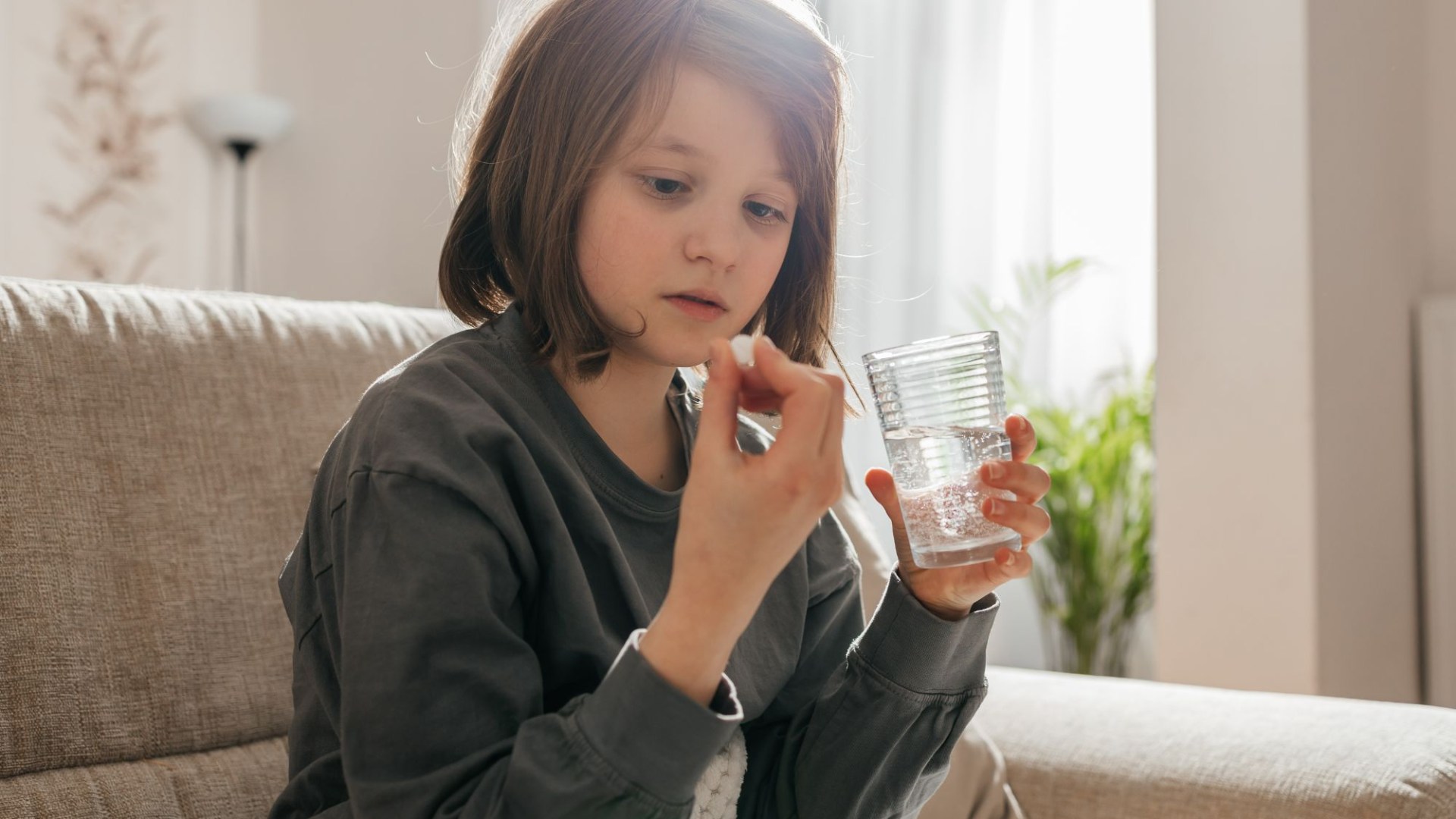SOME common cold and flu medications may increase the risk of seizures in children by 22 per cent, a study has found.
Researchers said findings highlighted the need for caution when prescribing the drugs to kids younger than two.
1
Nighttime cold and flu may often contain what are known as “first generation” antihistamines, first developed in 1940s and 50s.
As opposed to “second generation” antihistamines, these older drugs can often make users feel sleepy as they pass easily from the blood to the brain.
Antihistamines are often used to relieve symptoms of allergies, some types can help relieve a runny nose and sneezing is you have a cold.
This is why first generation versions are sometimes added to nighttime cold and flu medicines.
As Korean researchers behind the new study explained: “Despite reduced therapeutic use owing to their poor selectivity and interactions with other receptors, these drugs are still widely used for
managing rhinorrhea (a runny nose) in the common cold or to control an itching sensation in children.
“Because first-generation antihistamines can cross the blood brain barrier, their effects may extend beyond somnolence and
drowsiness to markedly influence brain wave activity.
“Thus, caution is advised when prescribing these antihistamines to children younger than two years, an age group for whom drug safety data are lacking and first-generation antihistamines are generally not recommended.”
One example of a first generation antihistamine is diphenhydramine, a drowsy-making antihistamine that’s contained in Benylin Day & Night Tablets for cold and flu relief.
The NHS says you can give diphenhydramine tablets and liquid to children over the age of six to treat cough and cold symptoms.
Another example is promethazine, which is added to Night Nurse Cold and Flu Relief capsules – this medication is only suitable for children aged 16 and older.
Researchers from the CHA University School of Medicine in South Korea found that older antihistamines found in some nighttime cold and flu tablets can increase the risk of seizures in young children.
Their study – published to the journal JAMA – looked at the data of 11,729 children born in Korea who had visited an emergency department with a seizure between 2002 and 2005.
They didn’t include over-the-counter drugs that contain first generation antihistamines in their analysis.
Researchers found that prescriptions of a first-generation antihistamine were linked to a 22 per cent higher risk of seizure in children.
Full list of first-class antihistamines analysed by researchers
Researchers didn’t include over-the-counter cold and flu drugs containing first generation antihistamines in their analysis.
They explained: “Antihistamines are available over the counter for children older than 24 months but require a prescription for those 24 months and younger.”
Here is the full list of prescription drugs they included in their analysis:
- Chlorpheniramine maleate
- Mequitazine
- Oxatomide
- Piprinhydrinate
- Hydroxyzine hydrochloride
This was especially the case in very young children aged six months to two years old.
“We are not aware of any other studies that have pointed out the increased risk of seizures with first-generation antihistamines in this particular age group, in contrast to older children, for whom we found no such association,” researchers said.
Children were at an elevated risk of seizure if they’d been prescribed the drugs up to 15 days before, they added.
The study authors reckon that younger children are more vulnerable to seizures than older age groups as the period between the ages of six and 24 months “is critical for brain development”.
They added: “The vulnerability of the infant brain to antihistamines is partly due to the developing blood brain barrier, which continues to evolve in this age group.
“In infants, incomplete formation of the BBB leads to increased permeability and a higher risk of drug penetration into the brain tissue.
“Therefore, antihistamines, which are relatively harmless to adults and older children, might markedly affect infants in a negative manner.”
The researchers say the findings emphasise the need for caution in prescribing first-generation antihistamines in young children.
They concluded: “It would be reasonable to inform families that at least one study has suggested a relatively small increase in the risk of seizures with first-generation antihistamines, adding that there are still too few data to draw any firm conclusions and also providing families with the information on what to do if the child were to have a seizure.”
They also advised clinicians to avoid prescribing first-generation antihistamines to younger children if there are batter treatment options available.




